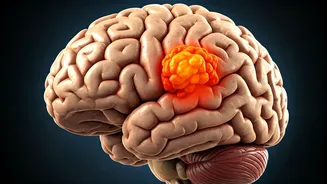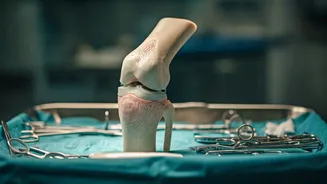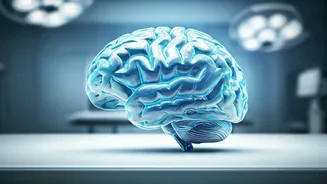Understanding Balance Issues
Balance, a complex interplay of sensory inputs, central nervous system processing, and physical responses, can be disrupted by numerous factors. Common
causes include inner ear disorders (like vertigo and Meniere's disease), neurological conditions (such as stroke, Parkinson's disease, and multiple sclerosis), vision problems, and musculoskeletal issues affecting strength and coordination. Medications, particularly those that affect the nervous system, can also contribute to balance problems, as can age-related decline. The implications of poor balance extend beyond simple unsteadiness; they significantly elevate the risk of falls, leading to injuries, hospitalizations, and decreased independence. Recognizing the root cause of balance issues is crucial for effective treatment strategies. Accurate diagnosis typically involves a thorough medical history, physical examination, and possibly specialized tests to pinpoint the underlying cause. Effective management often integrates multidisciplinary approaches tailored to each patient's specific needs, emphasizing the importance of a comprehensive and individualized treatment plan.
Benefits of Therapy
Balance rehabilitation therapy offers a wide array of benefits, targeting multiple facets of balance and overall well-being. A primary advantage is improved stability, achieved through exercises that strengthen the muscles responsible for balance, enhancing the body's ability to maintain an upright posture. Simultaneously, the therapy focuses on improving sensory integration, training the brain to better process information from the inner ear, eyes, and proprioceptors (sensory receptors in muscles and joints). This leads to more efficient and accurate control of movement and posture. Furthermore, the therapy enhances mobility, making everyday activities, such as walking, turning, and navigating uneven surfaces, easier and safer. Fall prevention is a significant outcome, reducing the risk of injuries and preserving independence. The psychological benefits are equally important, as improved balance boosts confidence and reduces the fear of falling, which can limit social participation. The integration of balance rehabilitation therapy into healthcare settings represents a proactive approach to maintaining and enhancing the quality of life, especially for those at risk of falls or experiencing balance disorders.
Therapy Techniques Unveiled
Balance rehabilitation therapy employs a variety of techniques customized to address specific balance deficits. Exercise-based interventions form the core, encompassing both strengthening and coordination exercises. Strength training improves the muscles' ability to support and control body movements, while coordination exercises refine the nervous system's ability to coordinate muscle activity. Sensory integration exercises challenge and improve the brain's ability to process sensory information, especially input from the inner ear, eyes, and proprioceptors. This training involves activities like walking on uneven surfaces, using visual cues to maintain balance, and practicing head movements during postural changes. Vestibular rehabilitation therapy (VRT), a specialized approach, is frequently used for inner ear disorders. VRT utilizes specific head and body movements to retrain the brain to compensate for inner ear dysfunction, thereby reducing dizziness and improving balance. Assistive devices, such as canes, walkers, and orthotics, may be incorporated to provide extra support and stability. The choice of techniques depends on a comprehensive assessment and the specific needs of the individual, ensuring an effective and personalized treatment plan.
Integrating into Primary Care
The integration of balance rehabilitation therapy into primary healthcare settings is becoming increasingly vital. Primary care physicians are often the first point of contact for patients experiencing balance problems, making it crucial for them to recognize and address these issues promptly. Integrating balance assessments into routine check-ups allows for early identification of balance deficits and at-risk individuals. Referral to physical therapists or specialists who offer balance rehabilitation therapy is a key step in providing comprehensive care. Education plays a crucial role; patients should be educated about fall prevention strategies, including home safety modifications, the importance of regular exercise, and medication reviews. Collaborative care is also essential, involving a multidisciplinary approach that may involve primary care physicians, physical therapists, neurologists, and other healthcare professionals. This collaborative model ensures that patients receive well-rounded and individualized care that optimizes balance, improves function, and enhances their quality of life. The proactive inclusion of balance rehabilitation therapy in primary care fosters proactive healthcare.















